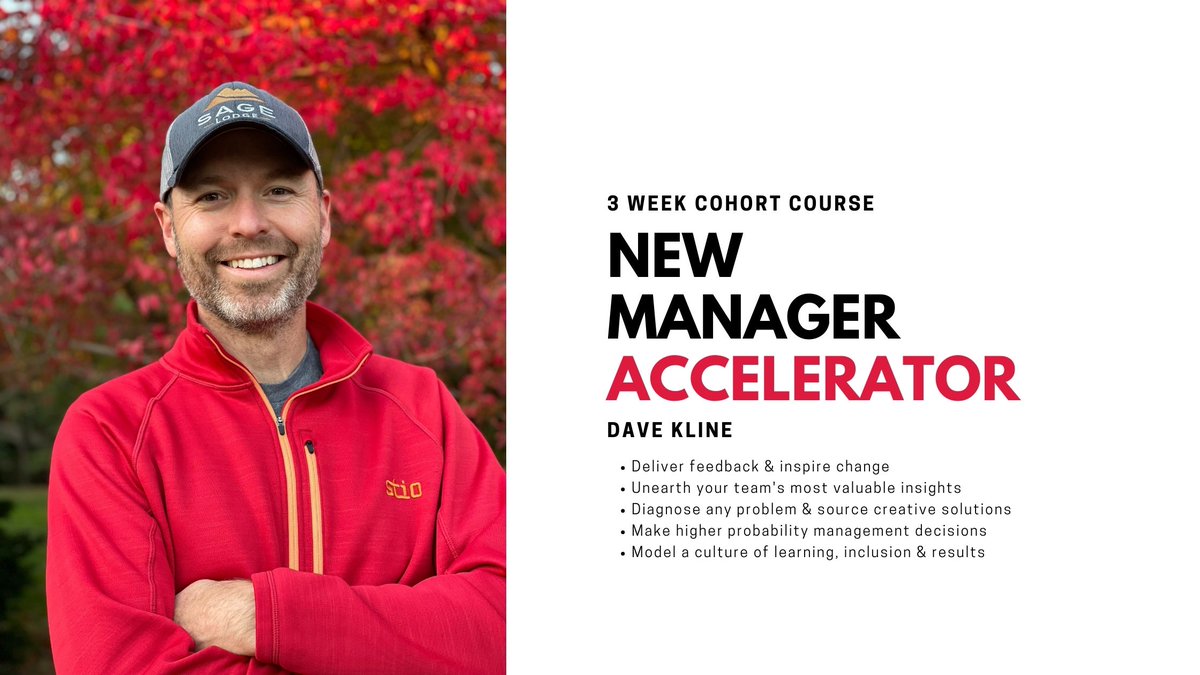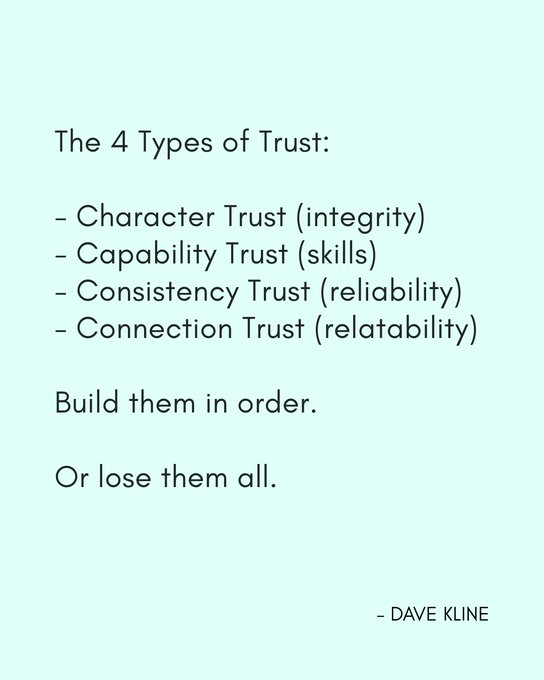I've trained 100's of managers.
The 60% who fail make one mistake:
They don't delegate
Here are 9 tactics to win more by doing less 🧵
The 60% who fail make one mistake:
They don't delegate
Here are 9 tactics to win more by doing less 🧵
1/ What should you delegate?
Everything. Not a joke.
You need to design yourself completely out of your old job.
Set your sights lower than that & you'll delegate WAY less than you should.
But don't freak out:
Responsibly delegating that much will take months.
Everything. Not a joke.
You need to design yourself completely out of your old job.
Set your sights lower than that & you'll delegate WAY less than you should.
But don't freak out:
Responsibly delegating that much will take months.
2/ Set Expectations w/ Your Boss
The biggest wild card when delegating is not your team.
It's your boss.
You don't need to be perfect, you just need to show you're in control.
The biggest wild card when delegating is not your team.
It's your boss.
You don't need to be perfect, you just need to show you're in control.
So let her in on your plan:
- That the must do's will be handled well
- That you'll be stretching & testing your team
- Exactly where you expect mistakes might happen
- How you plan to handle any breaks
Remember:
You're actually managing your boss.
- That the must do's will be handled well
- That you'll be stretching & testing your team
- Exactly where you expect mistakes might happen
- How you plan to handle any breaks
Remember:
You're actually managing your boss.
https://twitter.com/wes_kao/status/1451926441239719947
3/ Set Expectations w/ Yourself
Your team will not do it your way.
So you have a choice:
- Waste a ton of time trying to make them?
- Harness their new perspective & enthusiasm to do it better?
Different, but better.
Remember: 5 people doing 80% as well as you did is 400%.
Your team will not do it your way.
So you have a choice:
- Waste a ton of time trying to make them?
- Harness their new perspective & enthusiasm to do it better?
Different, but better.
Remember: 5 people doing 80% as well as you did is 400%.
And be honest with yourself:
- If you have to hang onto something -> do it.
- If you feel guilty delegating a miserable task -> question it.
- If you can't delegate them anything -> you have a bigger problem.
- If you have to hang onto something -> do it.
- If you feel guilty delegating a miserable task -> question it.
- If you can't delegate them anything -> you have a bigger problem.
4/ Delegate for Your Development
The only way you'll grow into a bigger role is space.
That's the carrot every time you find yourself saying "It's easier if I just do it myself this one time."
The only way you'll grow into a bigger role is space.
That's the carrot every time you find yourself saying "It's easier if I just do it myself this one time."
Your initial delegation prioritization:
1) Anything partially delegated -> Completion achieves clarity.
2) Where you add the least value -> Your grind is their growth.
3) The routine -> Ripe for a runbook or automation.
1) Anything partially delegated -> Completion achieves clarity.
2) Where you add the least value -> Your grind is their growth.
3) The routine -> Ripe for a runbook or automation.
5/ Delegate for Their Development
Now focus on the stretch each employee needs to excel.
Easy place to start: ask them how they want to grow.
People usually know. And they'll feel agency over their own mastery.
Bonus: Challenge them to find & take that work.
Virtuous cycle.
Now focus on the stretch each employee needs to excel.
Easy place to start: ask them how they want to grow.
People usually know. And they'll feel agency over their own mastery.
Bonus: Challenge them to find & take that work.
Virtuous cycle.
6/ Set Expectations w/ Your Team
Good delegation is more than assigning tasks:
- It's goal-oriented
- It's written down
- It's intentional
Good delegation is more than assigning tasks:
- It's goal-oriented
- It's written down
- It's intentional
https://twitter.com/david_perell/status/1245536487476617218
7/ The Mechanics
You've already:
- Defined your goals
- Given the resources
- Aligned on success
Now, start climbing:
- Steps over Tasks
- Processes over Steps
- Responsibilities over Processes
- Goals over Responsibilities
- Jobs over Goals
Each rung is higher leverage.
You've already:
- Defined your goals
- Given the resources
- Aligned on success
Now, start climbing:
- Steps over Tasks
- Processes over Steps
- Responsibilities over Processes
- Goals over Responsibilities
- Jobs over Goals
Each rung is higher leverage.
8/ Watch out for:
Delegating & walking away
- You need to trust. But you also need to verify.
- Metrics & surveys are a good starting point.
Micromanaging
- That's your insecurity, not their effort.
- You new job is to enable, motivate & assess the various paths.
Delegating & walking away
- You need to trust. But you also need to verify.
- Metrics & surveys are a good starting point.
Micromanaging
- That's your insecurity, not their effort.
- You new job is to enable, motivate & assess the various paths.
9/ Want to go deeper?
60% of new mangers fail in the 1st 18 months.
Why?
They don't get trained in the tactics they need to thrive.
Delegation is just one of the key skills we're going deep on in my upcoming New Manager Accelerator course.
Join us?
skillscouter.com/management-acc…
60% of new mangers fail in the 1st 18 months.
Why?
They don't get trained in the tactics they need to thrive.
Delegation is just one of the key skills we're going deep on in my upcoming New Manager Accelerator course.
Join us?
skillscouter.com/management-acc…

10/ Bonus: Radical Delegation
I would recommend getting the basics down before going here.
But if you need a picture of what's possible, this is an inspiring one.
I would recommend getting the basics down before going here.
But if you need a picture of what's possible, this is an inspiring one.
https://twitter.com/shreyas/status/1401598910792011776
• • •
Missing some Tweet in this thread? You can try to
force a refresh









